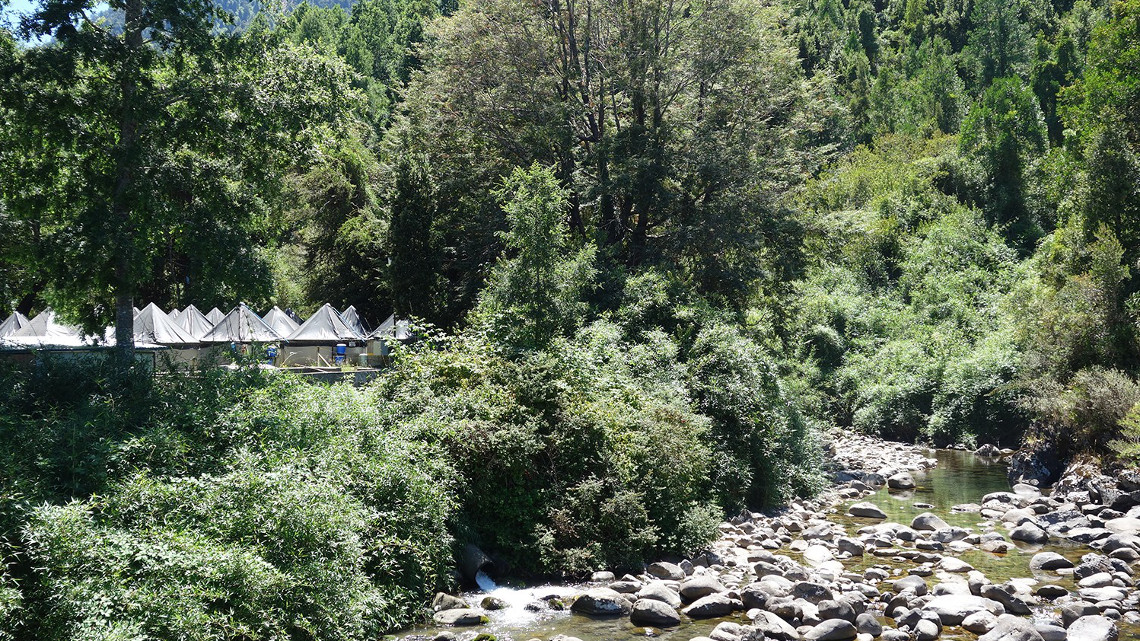Salmon farming pollutes the environment
Aquacultures are polluting Chile's rivers with a cocktail of dissolved organic substances. An international team of researchers establishes new safety limits.

Without a doubt, salmon is one of the most popular edible fish of all. Ever more and bigger salmon farms and aquacultures are being build to manage the demand – but not without risk for the environment. For years, Chile has been ranked second behind Norway in the list of key salmon producers worldwide. The country produces approximately 820,000 tonnes of salmon with a total value of about five billion US dollars. How does this mass production affect the environment? German and Chilean scientists have investigated this question under the leadership of the Helmholtz Centre for Environmental Research (UFZ). They examined the dissolved organic compounds, which enter Chile's rivers from salmon farms, and have published a report in the journal Scientific Reports, warning that these substances are placing a huge strain on the ecosystems and are changing entire biological communities.
Chiles salmons are moving several times
Free salmons travel a long way over the course of their lives. The eggs are deposited in the gravel beds over the upper reaches of rivers. This is also where the young hatch and grow for a while in the clean, oxygen-rich water, before setting off towards the sea. The adult fish live in the sea, but swim upstream into rivers once again in order to reproduce.
The breeding farms have to take these patterns into account and provide different living conditions depending on the age of the fish. Therefore Chilean fish farmers have installed a few hundred hatcheries for the eggs and the youngest animals in the clear rivers. Slightly larger salmon live in cages in the lakes of the South American country, and the adults then move into similar accommodation anchored in the sea just off the coast.
Antibiotics in spring water
However, this salmon mass production has not been without an impact on the environment. The cages for the medium and larger fish leak excrement, food residue and other substances into the country’s seas and coastal waters. The companies also draw water from some of the extremely clean, natural rivers, only to reintroduce the freshly polluted water back into the river further downstream. "Completely turbid water is no longer allowed to re-enter the river," reports Norbert Kamjunke, a biologist at UFZ. Nevertheless, both the environment and people living close by are suffering.
The number of particles contained in the water must be below certain threshold values. However, there are no such regulations for dissolved substances. In fact, in an earlier study Kamjunke and his colleagues discovered that for every 50 tonnes of farmed salmon around 40 tonnes of dissolved organic substances end up in the rivers.
These substances, which are grouped together as Dissolved Organic Matter (DOM), include the liquid excretions of the salmon, dissolved residues of food, as well as disinfectants and antibiotics.
Organic substance affect ecosystem
The researchers studied the DOM content above and below four Chilean aquacultures and took samples from sections of the river both upstream and downstream of the farms.
In general, natural sections of rivers contain less dissolved organic material, meaning that these areas are predominantly low in nutrients.
However, the introduction of waste water from the aquacultures changes this completely. In particular, much higher concentrations of carbohydrates, proteins and lipids are present downstream of the facilities. "But this changes the entire ecosystem," explains Norbert Kamjunke. The bacteria downstream of the facilities use up a large amount of oxygen to break down the dissolved organic matter. The resulting low oxygen concentrations are endangering many species that have adapted to life in clean flowing water.
Safety limits could protect the waters
An earlier study by the researchers from Magdeburg demonstrated that even under ideal conditions, such as high temperatures and low flow rates, bacteria had broken down the pollution only around 2.7 kilometres downstream of the facility.
The researchers therefore advocate the introduction of safety limits for the DOM concentrations entering the river. Moreover, they drew the conclusion that it is not advisable to install any further aquacultures on Chilean rivers. The authorities have already imposed a moratorium on new salmon farms in the country’s lakes. Operators are now considering the option of moving the farming of medium-sized salmon from the lakes to the rivers. "In theory that could work," believes Kamjunke. "But from an ecological perspective, it would not be a good idea."
jmr


